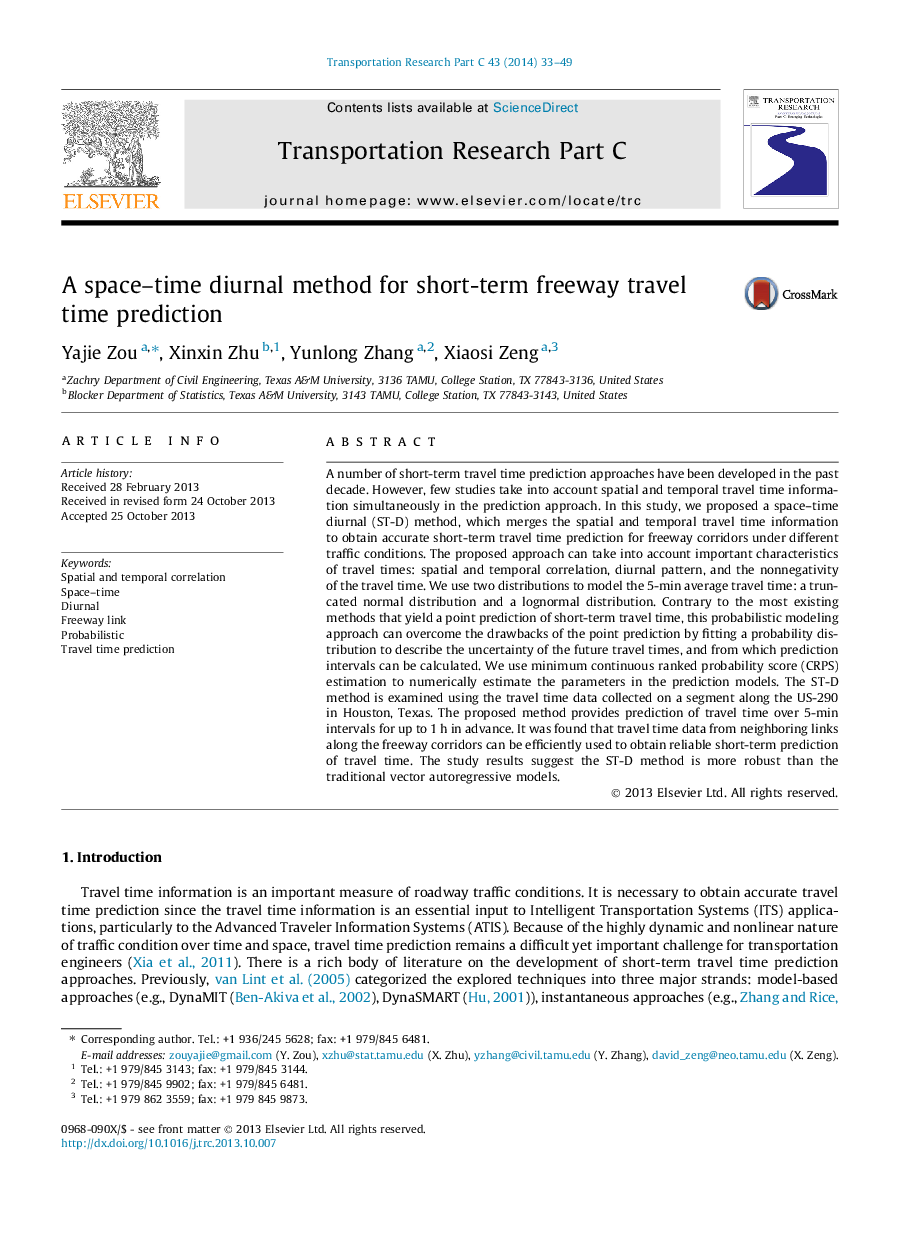| Article ID | Journal | Published Year | Pages | File Type |
|---|---|---|---|---|
| 525097 | Transportation Research Part C: Emerging Technologies | 2014 | 17 Pages |
•We propose a space-time diurnal method to predict short-term freeway travel times.•The method considers spatial and temporal correlation and diurnal pattern of travel times.•We use two distributions to model the 5-min average travel time.•This method provides the distribution of predicted travel times and their prediction intervals.•Travel time data from neighboring links can be used to improve prediction of travel times.
A number of short-term travel time prediction approaches have been developed in the past decade. However, few studies take into account spatial and temporal travel time information simultaneously in the prediction approach. In this study, we proposed a space–time diurnal (ST-D) method, which merges the spatial and temporal travel time information to obtain accurate short-term travel time prediction for freeway corridors under different traffic conditions. The proposed approach can take into account important characteristics of travel times: spatial and temporal correlation, diurnal pattern, and the nonnegativity of the travel time. We use two distributions to model the 5-min average travel time: a truncated normal distribution and a lognormal distribution. Contrary to the most existing methods that yield a point prediction of short-term travel time, this probabilistic modeling approach can overcome the drawbacks of the point prediction by fitting a probability distribution to describe the uncertainty of the future travel times, and from which prediction intervals can be calculated. We use minimum continuous ranked probability score (CRPS) estimation to numerically estimate the parameters in the prediction models. The ST-D method is examined using the travel time data collected on a segment along the US-290 in Houston, Texas. The proposed method provides prediction of travel time over 5-min intervals for up to 1 h in advance. It was found that travel time data from neighboring links along the freeway corridors can be efficiently used to obtain reliable short-term prediction of travel time. The study results suggest the ST-D method is more robust than the traditional vector autoregressive models.
